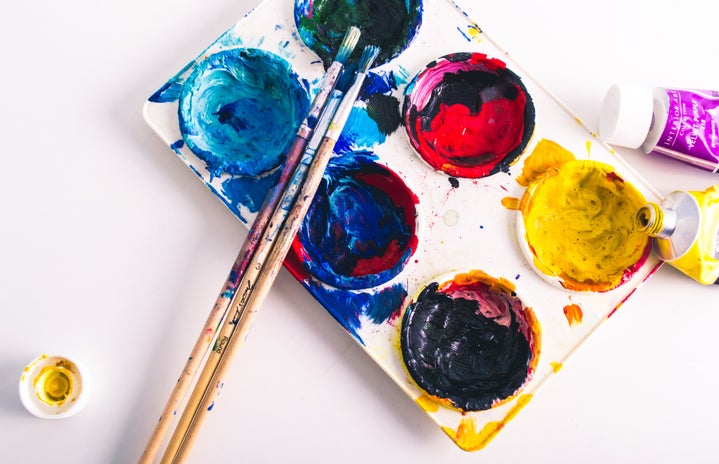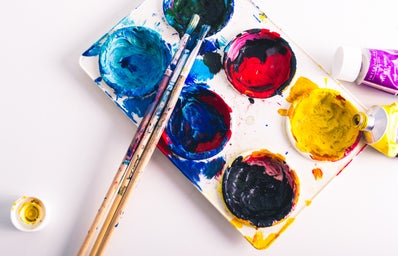Undeniably, colors play an important role in our lives. Depending on how you feel, your choice of outfit choice will be influenced by your mood at that moment. That’s the reason why colors are constantly associated with emotions.
There is an area called the Psychology of Colors that studies the brain’s process of relating feelings to colors. Warm colors like red, orange, and yellow are dynamic and stimulating. Cool colors, like blue, purple, and green are calming, smooth, and static. The relationship between colors and sensations is explored by marketing companies. Also, the fashion industry takes advantage of this.
The Color Chromatic Circle Theory
When it comes to creating fashion designs, stylists follow some “rules”. Depending on the season, there are colors that will be predominant. Usually, warm tones are more seen in summer and spring collections and neutral tones rule the fall and winter ones.
However, it is not an impediment to creating bold color combinations. Using the Color Chromatic Circle, fashion designs create amazing combinations. That’s how it works: this circle is divided into 12 colors, each one representing a color, containing three primary colors (yellow, red, and blue), three secondary colors (the mixture between the primary colors), three tertiary colors (the mixture between primary and secondary colors) and three neutral colors (white, black, gray and brown).
There are three ways to create harmonious color combinations. The fashion stylist can create monochromatic designs by only using lighter and darker variations of the same pure color. In order to provoke contrast, complementary tones that are opposite colors in the Chromatic Circle can be used. Analogous color combinations are made by one primary color and other adjacent color tones.
When the color becomes the signature of a brand
Fashion brands have been using remarkable colors for decades to establish their position in the industry. Every fashion enthusiast knows how to recognize a brand just by its color: the classic baby blue from Tiffany, the orange from Hermès, the green from Bottega Veneta, or even the red from Louboutin’s shoes. Blue Tiffany, represented by the number 1837C, is a color code spread internationally by Pantone, the main color company in the world.
Recently, the fashion brand Valentino launched its own color during the Valentino Fall/Winter show, in the Paris Fashion Week of 2022. Using a monochromatic theme, almost every design was pink, including the makeup of the models. Even the walls and the floor of the runaway were pink. The purpose of the brand was to create a new mood, representing an optimistic and modern view. The only color that shared the space with the pink was black, planned purposely to emphasize the vibrant pink color.
Pierpaolo Piccioli, the creative director of Valentino, said to British Vogue that he wanted to create a tone that was able to communicate the legacy of Valentino’s Rosso (red) from a modern perspective. In collaboration with Pantone, the brand could bring the perfect pigment.
According to Vogue, this tone of pink stimulates self-confidence and brings happiness. That’s one of the reasons why the Valentino Pink PP went viral on the internet. Celebrities, like Zendaya, Gigi Hadid and Anne Hathaway showed up wearing all-pink Valentino looks at the most important events. Certainly, this tone of pink will be remembered as a brand signature.
Using colors as a branding strategy
Colors and their variations are visually attractive. It is proved that the customer’s choice is influenced by the appearance of the piece. Every luxury and successful brand knows how to combine the color and structure of the designs to create an identity. Recent Piccioli’s pink strategy is a recent example of branding. There is no need to have the brand’s logo printed all over the looks. The power of the colors can easily state the visual signature of designer clothing.
However, this can happen unintentionally. Let’s take Hermès as an example. In 1939, during World War II, there was a shortage of raw materials. The Hermès packaging, which used to be made of faux pigskin in a cream shade, was no longer available. The alternative was to start fabricating paper boxes using the only pigment that could be found: a bold orange. This color, originated by a necessity, became the synonym of luxury in the fashion market. One curious fact is that the Hermès orange boxes won an Oscar for their prestigious packaging, in 1994.
The article above was edited by Julia Bonin.
Liked this type of content? Check Her Campus Cásper Líbero home page for more!


